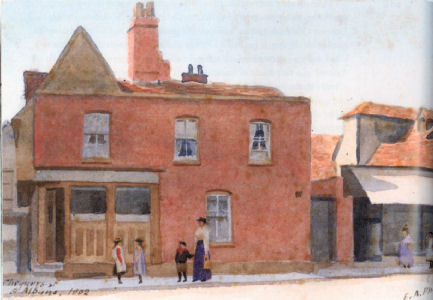 |
|
|
Cover Text |
|
|
Over 2,000 years of history are presented in this beautiful and fascinating new book about St. Albans. Dr. Mark Freeman takes us on a remarkable discovery and insight from the important Iron Age settlement of Verlamion, and the Roman Town of Verulamium, right up to the present day. There are few places where local history overlaps with the national experience quite so frequently and interestingly as it has in St Albans. Throughout the past St Albans has served the roles of market town and stopping off place on the road to London; yet at certain points - such as the Roman period or when the Medieval abbey was founded - the town was also of genuinely national significance. The author brings many new insights to the story of St Albans. His text combines local detail and colour with broad themes such as the town's relationship with London and the constant pull of history and heritage in its cultural life. The book contains boxed sections on important themes and over 200 illustrations, mostly in full colour, and many specially commissioned for the book. |
St Albans
a history
Mark Freeman
Carnegie Publishing, 2008
ISBN 978-1-85936-139-9 hardback
ISBN 978-1-85936-190-0 paperback
My first reaction to this book is one of delight - as St Albans has a complex history over several thousand years - and this is clearly a well resourced volume, with source references, and a good index. At the time of writing I have not yet read it from cover to cover but have examined various topics, such as brick-making and cricket, using the index I was very happy with what I found. While the genealogist who does little more than collect name references will be disappointed any family historian who wants to know how the town (and later city) worked and played will find much background information relating to what their ancestors might have done. For instance the following trades and industries are mentioned in the index:
Aircraft manufacture, bakers, Brazilian hats, brewing, bricklaying, brick-making, brush manufacture, building/construction, butchers, cardboard box manufacture, chronometer manufacturer, cloth fulling, cloth manufacture, coat manufacture, coopering, cotton mill, goldsmiths, lace, leather/tanning, lime juice and marmalade, millinery, milling, orchids, printing, rubber woyks, seeds, shoes and boots,silk mill, suet manufacturer, tailoring, tallow - with references to electricity. gas and the waterworks
|
Chequer Street, painted by E. A. Phipson, 1902 In addition to modern photographs the book contains many older pictures, mainly sourced by St Albans Museum, including three by Evacustes A Phipson. |
| Locating
Books At the time this page was last updated second hand copies were available online |
| April 2010 | Page Created |


